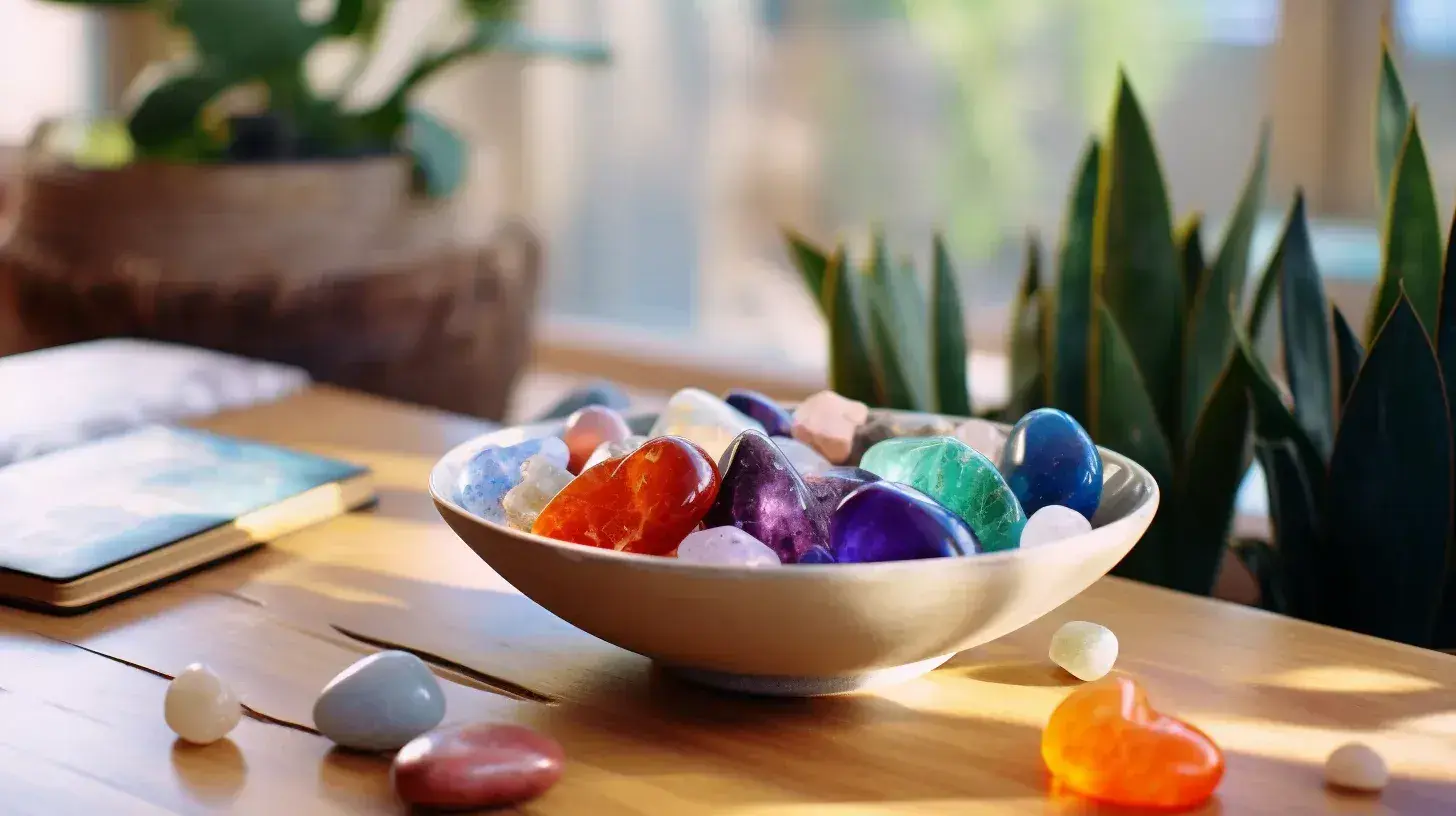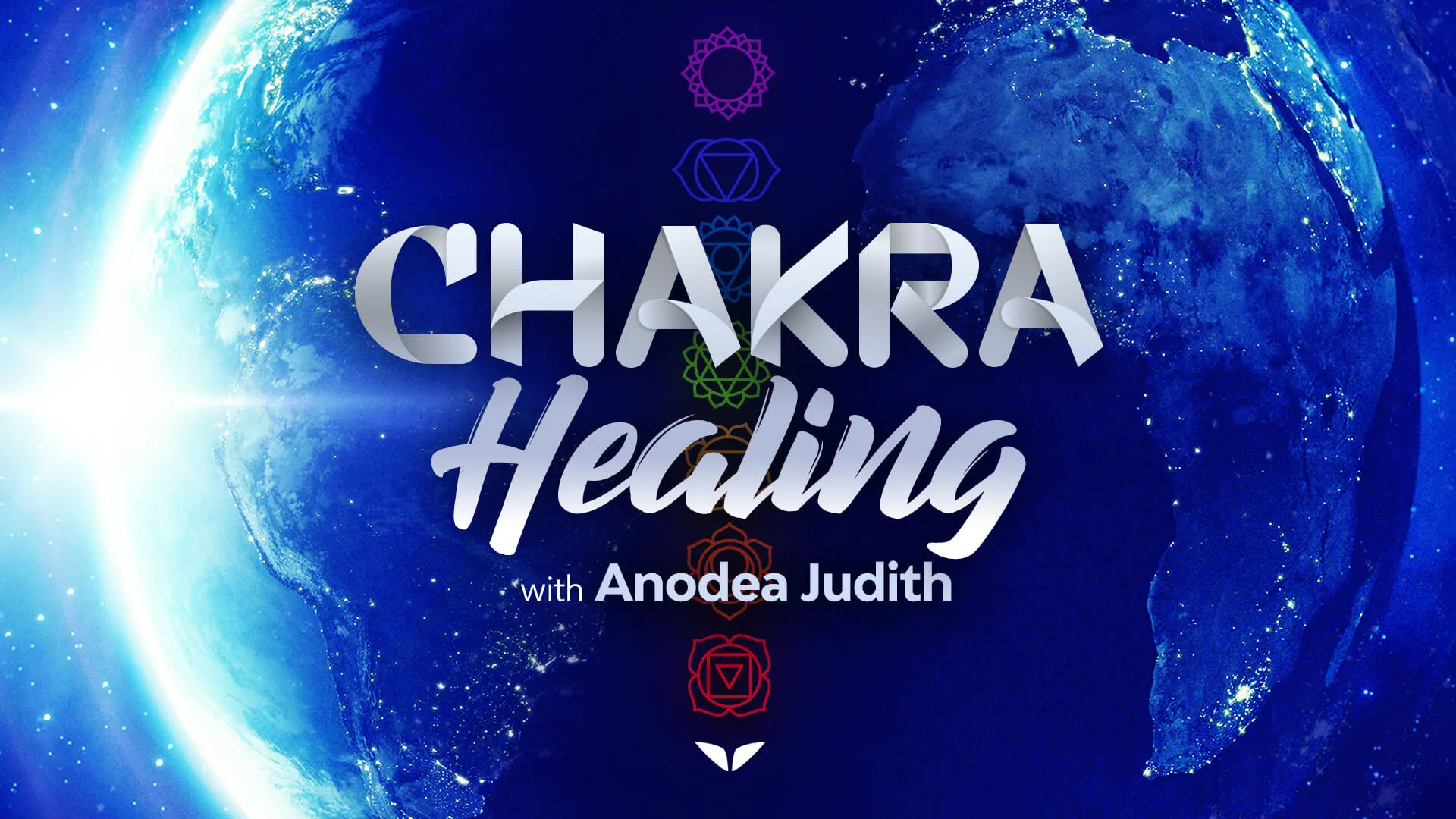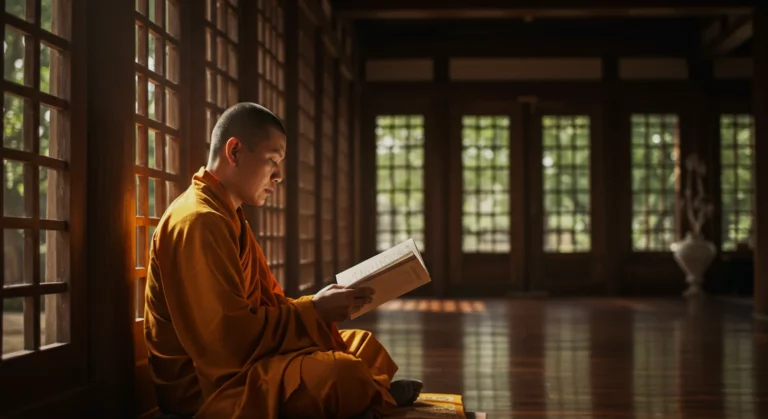Chakras are, in a way, like Skittles—they embody the colors of the rainbow. However, before you start assigning ROYGBIV in ascending order of the seven energy points, it’s important to understand that the chakra colors are unique to each, with different meanings and influences on your well-being.
There’s physiology, psychology, and spirituality behind the chakra colors, and when you understand how to use them, you can enrich your life in ways you may have never considered.
What are the colors of the chakras?
Each of the seven energy centers is assigned a different hue. Here are the chakra colors in order:
| 1. The Root Chakra | Red |
| 2. The Sacral Chakra | Orange |
| 3. The Solar Plexus Chakra | Yellow |
| 4. The Heart Chakra | Green |
| 5. The Throat Chakra | Blue |
| 6. The Third Eye Chakra | Indigo |
| 7. The Crown Chakra | Violet |
As mentioned, each color is simply a vibration. In addition to that, there’s also meaning behind each shade.
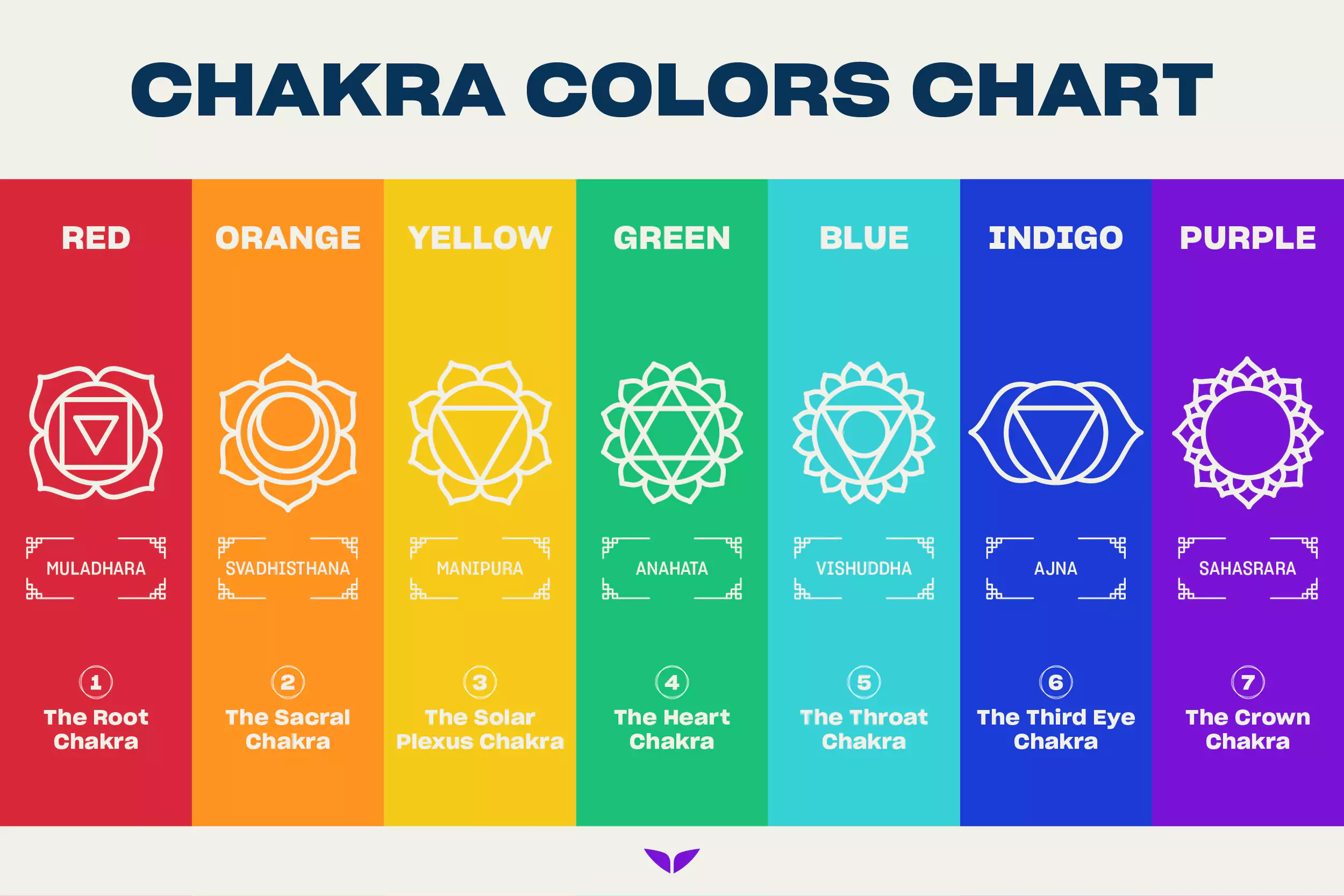
What do the chakra colors mean?
Here’s a closer look at each energy center, the meaning of its color, and how to open your chakras so you can use them to enhance your life.
1. The root chakra: Red
This particular energy center is located at the base of the spine. Its Sanskrit name, Muladhara, is a term formed out of the words ‘root’ and ‘support.’
It’s no wonder its color is red—a hue that promotes a feeling of being grounded and connected to the earth. It also represents passion, fire, and danger.
The root chakra is linked to the adrenal glands, which control a person’s ‘fight or flight’ response. And so, when it’s blocked, there may be a sense of disconnection from the world, leaving us feeling insecure, restless, and without energy. This can manifest as anxiety, depression, anger, low self-esteem, resentment, and so on.
How to open your root chakra: Repeating affirmations is a great way to reinforce your connection with the world. These statements can include:
- The world around me is a safe place.
- I am part of this world.
- I am at peace with the people and things around me.
2. The sacral chakra: Orange
The sacral chakra is located at the pelvis and is the center of pleasure. It relates to gut feelings and intuition. When this energy is healthy, it brings a powerful and natural feeling of intimacy.
Its color, orange, is an energizing and creative color, promoting warmth and security. It brings to mind thoughts and feelings of passion, pleasure, and sexuality.
Now, when the sacral chakra is blocked, emotions can be all over the place. We may feel insecure, in constant anxiety, in constant fear, or in a complete lack of joy.
How to open your sacral chakra: One great method is using chakra mantras, and the sound that corresponds to the sacral chakra is ‘VAM.’ The vibrations from chanting ‘VAM’ open and align this chakra.
3. The solar plexus chakra: Yellow
Located at the center of the body, the solar plexus chakra plays an important role in the development of personal power. It promotes a feeling of confidence and optimism.
It’s associated with the strong, emotional yellow. This chakra color promotes thoughts and feelings of courage, happiness, and self-esteem. Focusing on it can help us feel stimulated, prepared, and capable.
However, when the solar plexus chakra is blocked, we can feel powerless or victimized. Our self-esteem runs low, either pursuing validation and acknowledgment or misusing our powers and manipulating others to meet our interests.
How to open your solar plexus chakra: Use chakra meditation to help balance and restore the flow of energy to your solar plexus. During your meditation, try to imagine a ball of golden-yellow light igniting the area of this chakra and getting larger with every inhale.
4. The heart chakra: Green
Green is the color of the heart. This chakra, which is located at the center of the chest, promotes a general feeling of well-being and vibrant health as it’s associated with growth and renewal.
This color brings to mind thoughts and feelings of compassion, kindness, and love. Green can make us feel healthy, alert, and empathetic.
A blocked heart chakra can cause us to feel disconnected, lack empathy, or distrust ourselves and others. This can manifest as deep insecurities, loneliness, jealousy, selfishness, or the inability to give and receive unconditional love.
How to open your heart chakra: Music speaks deeply to the human spirit, so one great way to bring balance and harmony to this chakra is by using Tibetan singing bowls. Each chakra resonates with a specific key; the heart chakra is K.
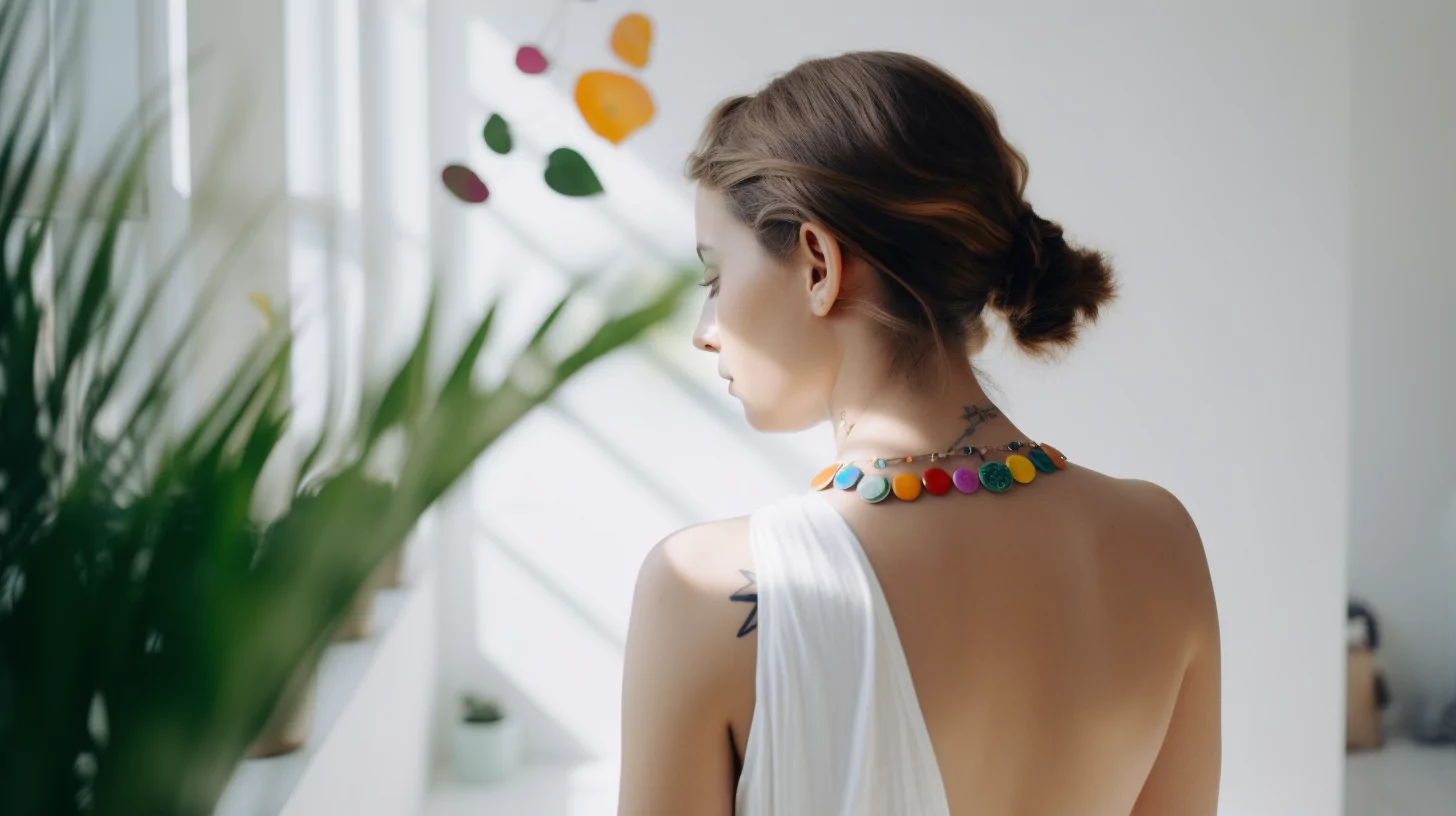
5. The throat chakra: Blue
This energy center is located between the collarbones. It’s associated with the color blue, promoting a feeling of calmness and stability.
The color brings to mind thoughts and feelings of logic, communication, and duty. Additionally, blue can make us smart, efficient, and well-spoken.
However, when the throat chakra is blocked, we lack the confidence to express our feelings, ideas, and thoughts. In turn, we may find ourselves frustrated at the inability to find the correct words.
Given the location of the chakra, physical ailments can manifest with a blocked energy center. This can include thyroid imbalances, tonsillitis, mouth ulcers, hearing problems, and ear infections.
How to open your throat chakra: This chakra is associated with the throat, neck, and nasal passages, so essential oils can surely help open it. Some of the best ones you can try include frankincense, geranium, and peppermint.
6: The third eye chakra: Indigo
The third eye chakra can be found slightly above the center between the eyebrows. And its color, indigo, is very spiritual. It promotes a feeling of connectedness and spiritual wisdom.
Indigo brings to mind thoughts and feelings of psychic energy, self-awareness, and devotion. What’s more, this color can make us wise, intuitive, and magical (even mysterious).
A blocked third eye chakra can negatively affect our concentration, how we process information, and our ability to keep calm in stressful situations. Additionally, we may experience being overwhelmed, mental exhaustion, indecisiveness, and clouded judgment.
How to open your third eye chakra: Stones, crystals, and gems have energy properties and can assist in balancing this energy center. Good stones for the third eye chakra include lapis lazuli, amethyst, and purple fluorite.
7: The crown chakra: Violet
The crown chakra sits at the top of the head and is associated with the universal colors of violet and white. They promote sensitivity and psychic abilities.
These chakra colors bring to mind thoughts and feelings of spirituality, oneness, and meditation. Moreover, violet and white can make us feel evolved, exalted, and spiritually awake.
When the crown chakra is blocked, however, it can lead to feeling incomplete or like life has no purpose, disconnection from our bodies and spirits, constant worry, headaches, and mental health issues.
How to open your crown chakra: Regular yoga practice can help release stuck or stagnant energy. Additionally, it relaxes your mind, centers your attention, increases body awareness, relieves mental stress patterns, and sharpens concentration. Yoga poses for the crown chakra include half-lotus, savasana, and tree pose.
Start your chakra healing journey—unlock a free class with Anodea Judith
What are the chakras?
There are seven chakras in the human body, which are situated along the spine from the base of it to the crown of the head.
- The root chakra: Muladhara
- The sacral chakra: Svadhisthana
- The solar plexus chakra: Manipura
- The heart chakra: Anahata
- The throat chakra: Vishuddha
- The third eye chakra: Ajna
- The crown chakra: Sahasrara
Meaning “wheel” in Sanskrit, the term “chakra” refers to the circular, spinning (like a wheel) energy center. And that energy is ancestrally known as “prana”.
“The chakra system is a profound philosophical system that represents the levels of consciousness,” explains Anodea Judith, a chakra expert and the trainer of Mindvalley’s Chakra Healing program. “So it’s the map to the architecture of your soul.”
And when it comes to the seven chakras, they work together to create life force energy, which, when balanced, can be beneficial for the mind, body, and spirit.
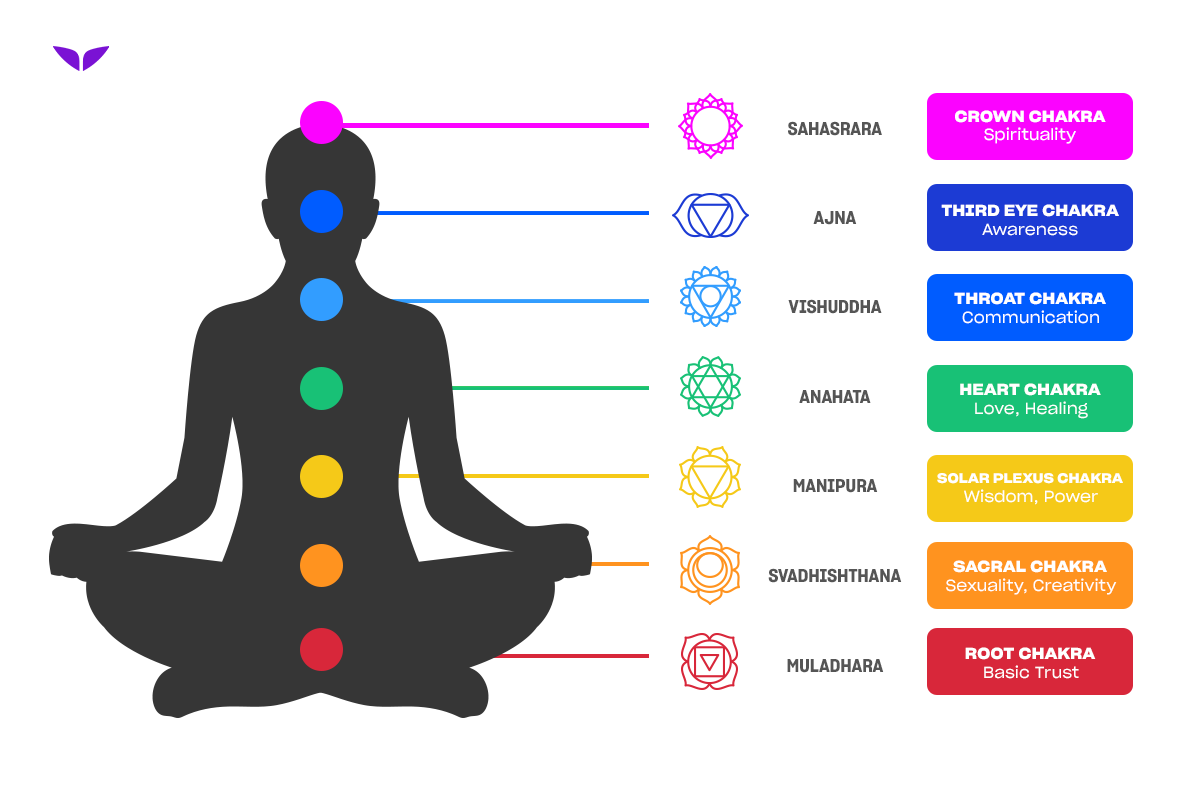
Why do chakras have colors?
Chakra colors, and chakras in general, are associated with energy, so each one carries a unique frequency and wavelength. The color assigned to every chakra is specifically chosen to match the vibration of that particular energy center.
Each of these [chakras] in the temple of the body is designed to handle a particular kind of energy. — @judithwosi Share on XMoreover, each chakra greatly affects the mind, body, and spirit in its own unique way, just as colors do. To really comprehend the chakra colors and their meaning, it helps to understand color in general.
Color psychology
Color, in a nutshell, is energy vibrating at certain speeds.
Lower vibrations produce warmer colors like reds and oranges, while higher vibrations produce cooler colors like blues and indigo. At the highest vibration, the two ends of the color spectrum meet and produce violet.
Research has shown that these different vibrations affect our physiology, such as mood, heart rate, and alertness, to name a few. Lower vibration hues, like red, seem to raise heart rate and instill excitement. Higher vibration hues, however, seem to have a contrasting effect — lowering the heart rate and promoting calmness.
Of course, we see lots of colors all the time, so color psychology doesn’t mean that every color we see will affect us. Instead, it’s really all about your focus.
According to research on the influence of color on memory performance, “the role played by color in enhancing our attention level is indisputable.” It adds that when we put more attention on certain stimuli (in this case, color), the stimuli will transfer to more permanent memory storage.
Simply put, when you focus on a specific color, or it’s overwhelmingly in your field of vision, it affects your brain and in turn, can influence your energy vibrations.
When you apply this to chakras and colors, each of the seven energy centers vibrates at a certain frequency, producing a certain color and ultimately affecting your mind, body, and spirit in one way or another.
How did the chakras get their colors?
The seven chakra colors follow a specific pattern: red, orange, yellow, green, blue, indigo and violet. If the sequence looks familiar, it’s because it’s ROYGBIV — the colors of the rainbow.
But why do they both follow ROYGBIV?
Chakra colors and the rainbow demonstrate the entire visible color spectrum. Simply put, they both contain every possible color that we can see as humans.
When you think of the seven chakras, instead of thinking of the energy centers individually (i.e., a red chakra, an orange chakra, and so on), think of an entire spectrum of color that starts at the base of your spine and goes out the top of your head.
As the individual chakras radiate out, their colors blend with the colors on either side, as in a rainbow.
Where did the chakra colors come from?
It’s difficult to pinpoint exactly when the ROYGBIV of the chakra color association came about. However, according to Kurt Leland, author of The Rainbody Body: How the Western Chakra System Came to Be, from the 1920s to the 1950s, the chakra system “gradually acquired its association with the rainbow colors and the endocrine glands.”
It was only in 1977 that the rainbow color scheme came to print with the publication of Bodymind: A Synthesis of Eastern and Western Approaches to Self-Awareness, Health, and Personal Growth by Ken Dychtwald, a gerontologist (a person who studies old age) and co-founder of Age Wave.
Awaken your chakra powers
With Skittles, you can “taste the rainbow.” But with chakras, you can feel them.
They’re the gatekeepers to your fullest potential. However, they have the potential of getting blocked, which leads to an imbalance in your mind, body, and spirit.
So for them to serve you fully, they need your attention and cooperation.
The good news is that, with the right tools, you can easily understand and harness your chakras, making you feel more grounded and secure.
The chakras are the portals connecting your inner world with the outer world. Whatever you do inside transforms the outside. — @judithwosi Share on XWith Anodea Judith to guide you in Mindvalley’s Chakra Healing program, you’ll learn how to heal, empower, and elevate yourself toward your extraordinary personal transformation.
Welcome in.
